Future projections
Sea level rise has been analysed for two climate change scenarios: the committed scenario, which corresponds to a global reduction in emissions in accordance with the Paris agreements (RCP4.5 scenario); and the passive scenario, which corresponds to a continuation of the current rate of emissions (RCP8.5 scenario), and for two time horizons: mid and end of the century.
In the year 2100, the increase in average sea level due to climate change on our coastline is expected to be 0.46 metres (committed scenario) and 0.64 metres (passive scenario). If, in addition, the effect of the tide and changes in pressure and wind are taken into account, the values would be 1.15 metres and 1.33 metres, respectively.
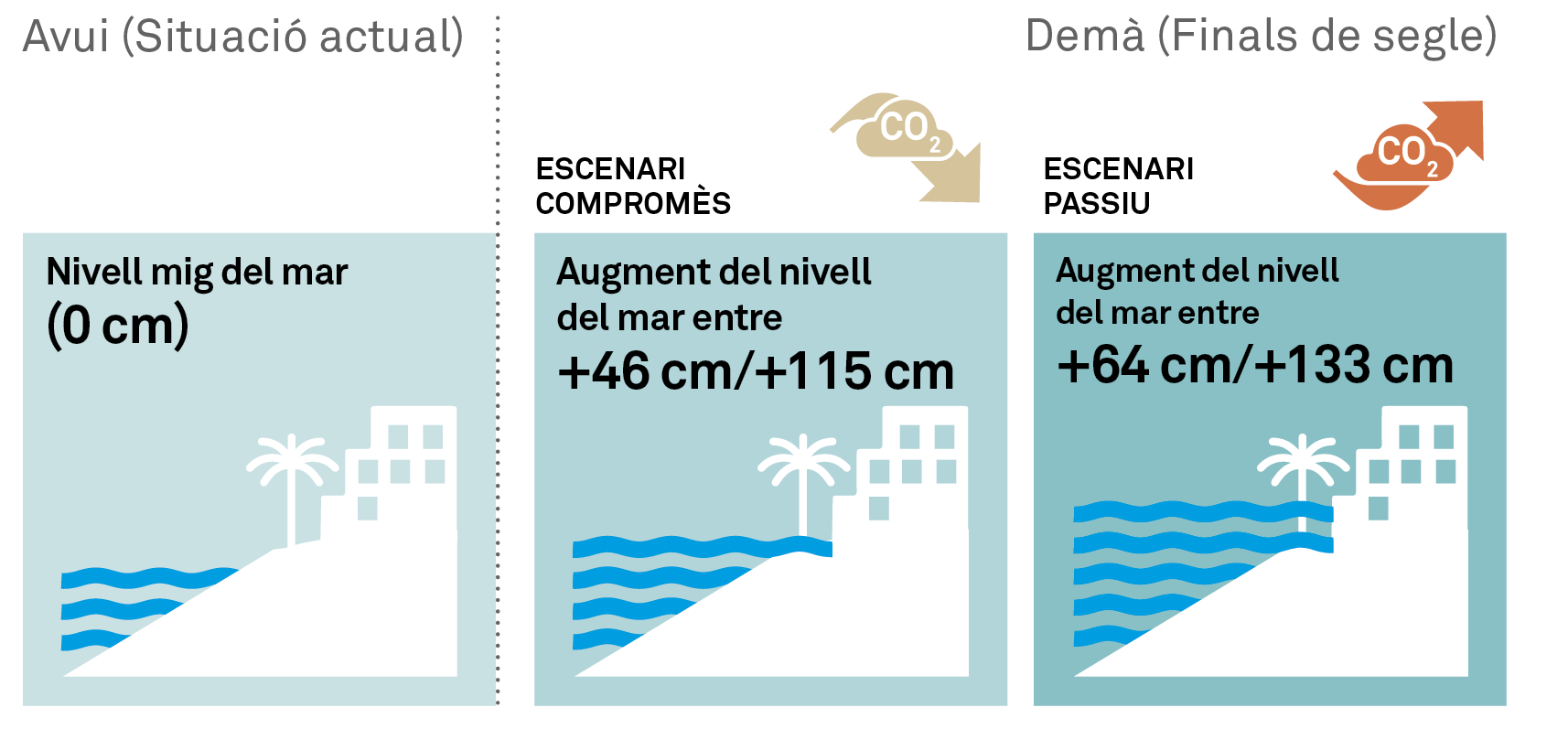
In addition, another scenario has also been evaluated for 2040, the ‘baseline’ scenario, which is based on the extrapolation, in the long term, of the trend in the historically observed flood level. Finally, the ‘most pessimistic’ scenario for the end of the century has been analysed, which responds to current concerns about the stability of the Greenland and West Antarctic ice sheets (even though the probability of this episode is low, the serious consequences mean that it cannot be ruled out).
The baseline scenario would indicate a total sea level rise of 1.69 metres by 2040, while the pessimistic scenario predicts an average sea level rise of 2.00 metres by 2100 which could be as high as 2.69 metres if tidal effects and changes in pressure and wind are also taken into account.
Predictions of sea level rise for the different scenarios have been made on the basis of literature studies. The maximum potential sea level rise for the different scenarios and time horizons are detailed below.
Projected maximum sea level rise for the period 2046-2065
Considering the permanent and potential flooding components (astronomical and meteorological tide) together, for the period 2046-2065 the total rise would be 0.94 m for the committed and passive scenarios, as the differences between one and the other for this period are minimal.
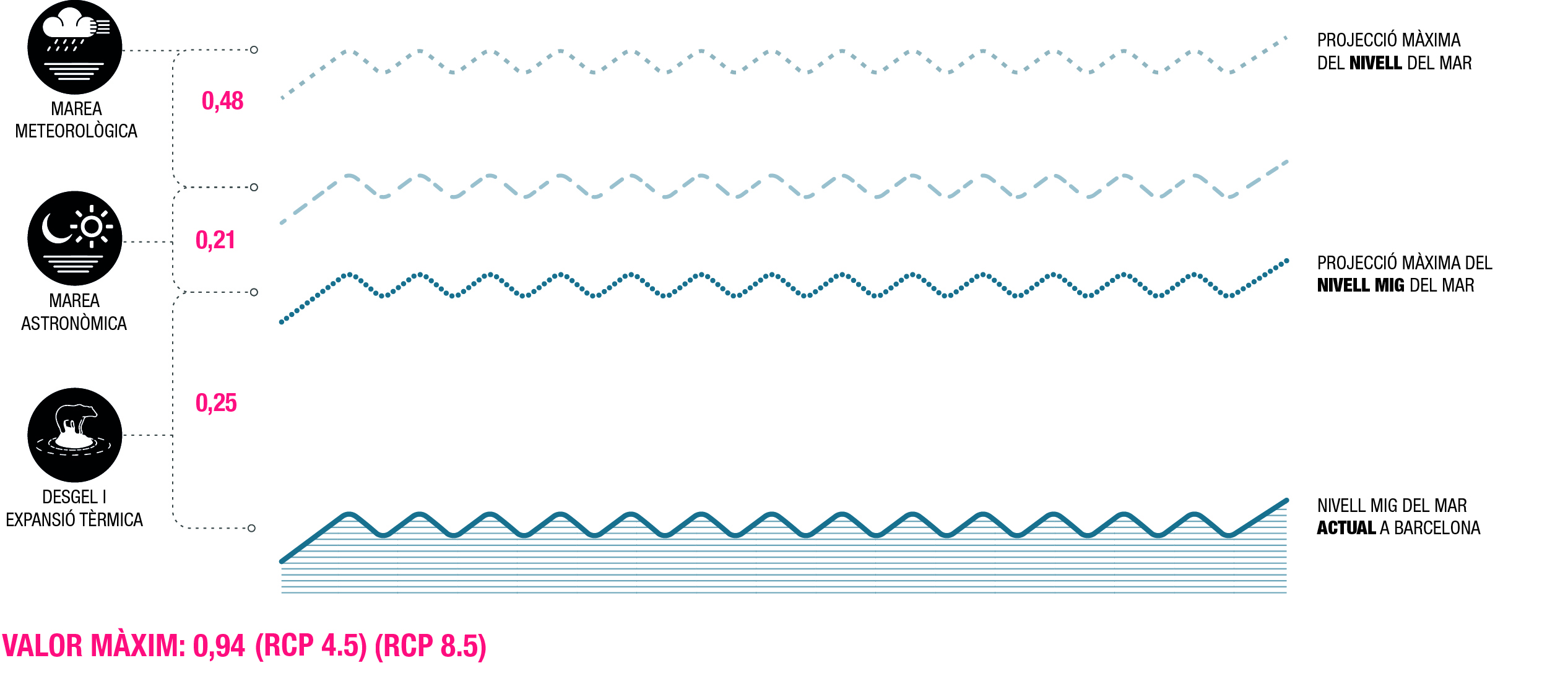
Projected maximum sea level rise for the period 2046 to 2065. Committed and passive scenario. Source: Barcelona Regional
In contrast, considering the 2040 projections of the baseline scenario, the total sea level rise would be much higher, reaching 1.69 metres.
Projected maximum sea level rise for the period 2081-2100
Considering the permanent and potential flooding components (astronomical and meteorological tides) together, for the period 2081-2100 the total rise would be 1.15 metres for the committed scenario and 1.33 metres for the passive scenario.
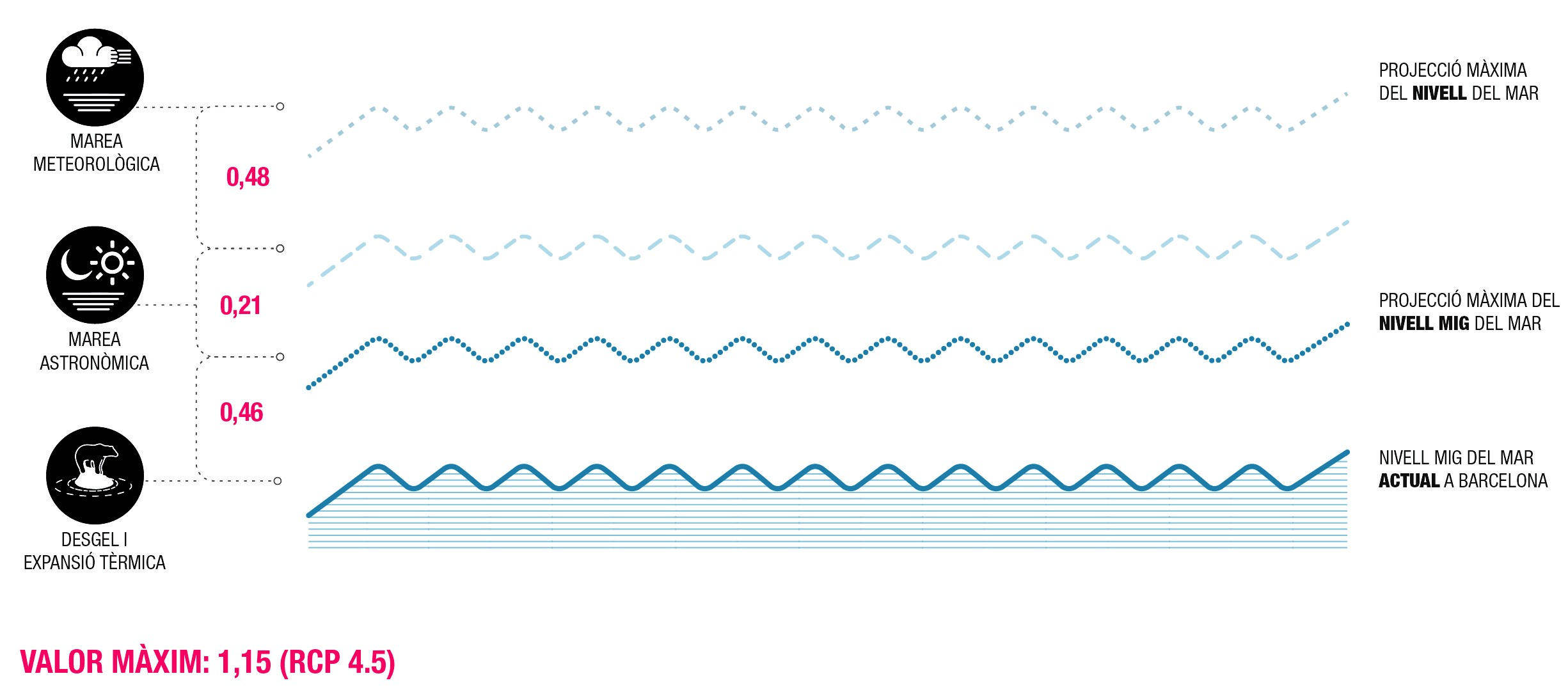
Projected maximum sea level rise for the period 2081 to 2100. Compromised scenario. Source: Barcelona Regional

Projected maximum sea level rise 2081-2100. Passive scenario. Source: Barcelona Regional
Conversely, considering the pessimistic scenario, the rise in relation to the current sea level by 2100 would be 2.69 metres, where, as in the previous cases, 0.48 metres corresponds to the meteorological tide and 0.21 metres to the astronomical tide, but the increase in the average sea level would be 2.00 metres.
Extreme flooding
In this case, in addition to the variations generated jointly by the permanent and potential flooding components, the effect of waves is considered.
Extreme events are random and complex phenomena, and are associated with a certain probability of occurrence. Climate change forecasts indicate an increase in the frequency of extreme events, although the magnitude is not expected to vary much. In the case of Barcelona, what was previously associated with 50-year return periods is expected to be associated with 35-year periods by 2050, as shown in the figures below.
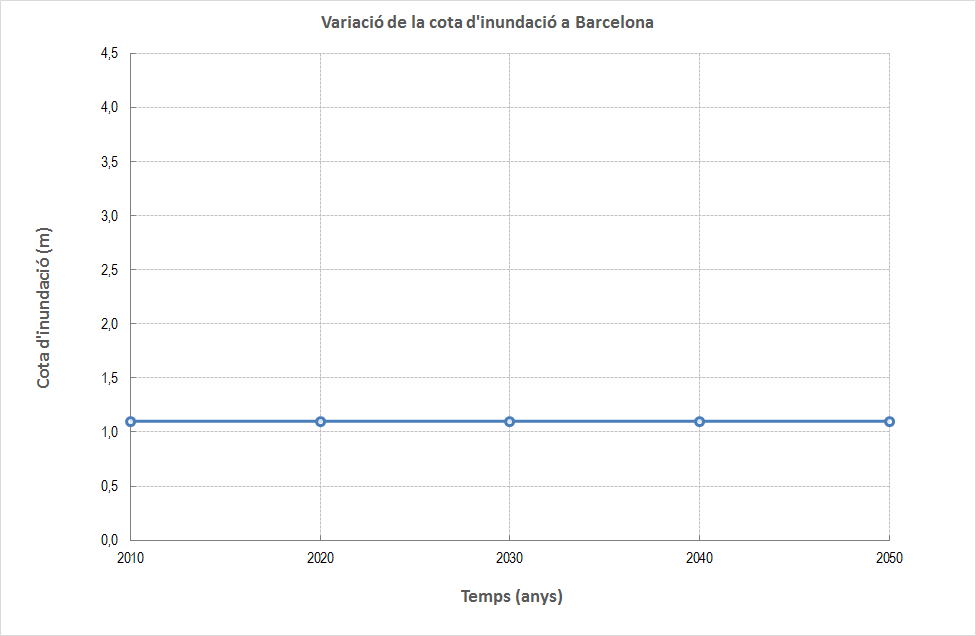
Variation in the flood levels for a 50-year return period in Barcelona. Source: Losada, I., Izaguirre, C. & Díaz, P. 2014. Climate change on the Spanish coastline
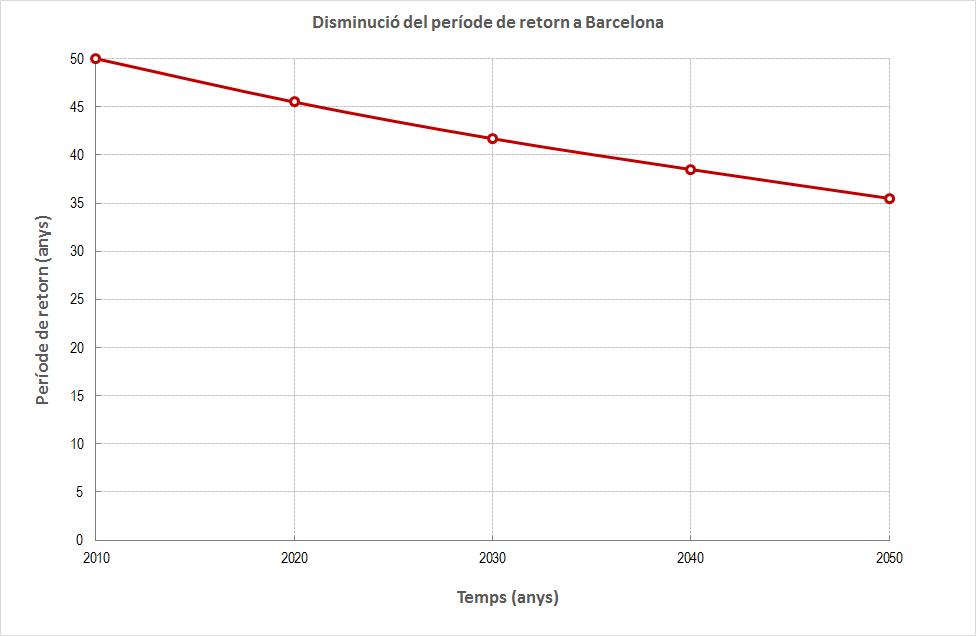
Variation in the return period for current flood levels in Barcelona. Source: Losada, I., Izaguirre, C. & Díaz, P. 2014. Climate change on the Spanish coastline
In order to estimate the level of wave recovery, data from the Green Book on the State of the Coastal Zone in Catalonia, produced by CIIRC (International Coastal Resources Research Centre) in 2010, were used as a reference.
The calculations of these values are prior to the beach stabilisation works carried out by the Ministry between 2006 and 2012, which included new protection elements and extraordinary contributions of sand, which may have slightly affected the equilibrium profiles of the beaches and, therefore, these wave run-up values. However, the average values obtained are 0.8 metres for a normal situation, 2.3 metres for a return period of 10 years (T10), and 2.7 metres for a return period of 100 years (T100).








 Profiles of the flood elevation at Sant Sebastià Beach beach for the different scenarios considered. Source: Barcelona Regional
Profiles of the flood elevation at Sant Sebastià Beach beach for the different scenarios considered. Source: Barcelona Regional
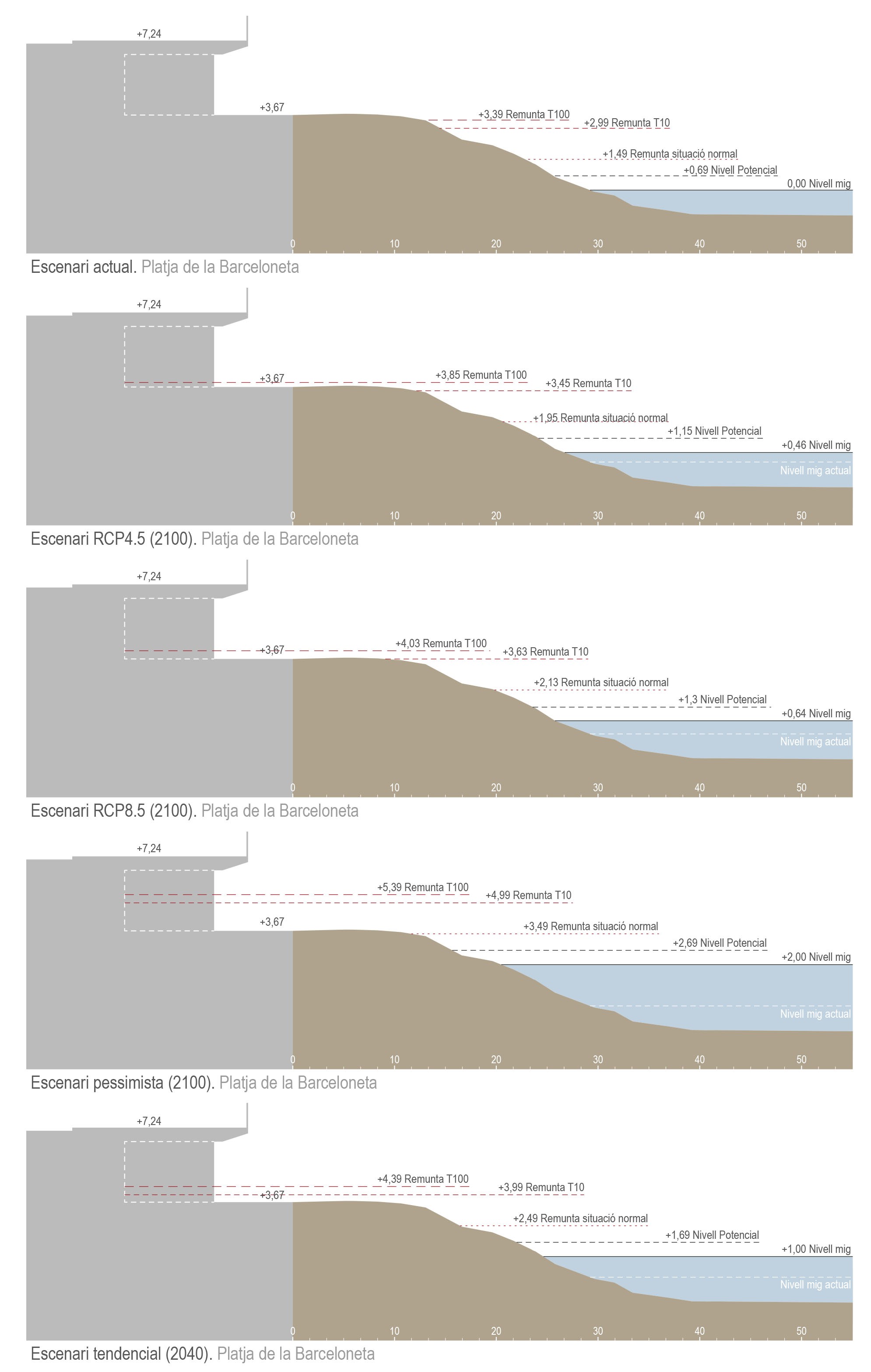 Profiles of the flood level at Barceloneta beach for the different scenarios considered. Source: Barcelona Regional
Profiles of the flood level at Barceloneta beach for the different scenarios considered. Source: Barcelona Regional 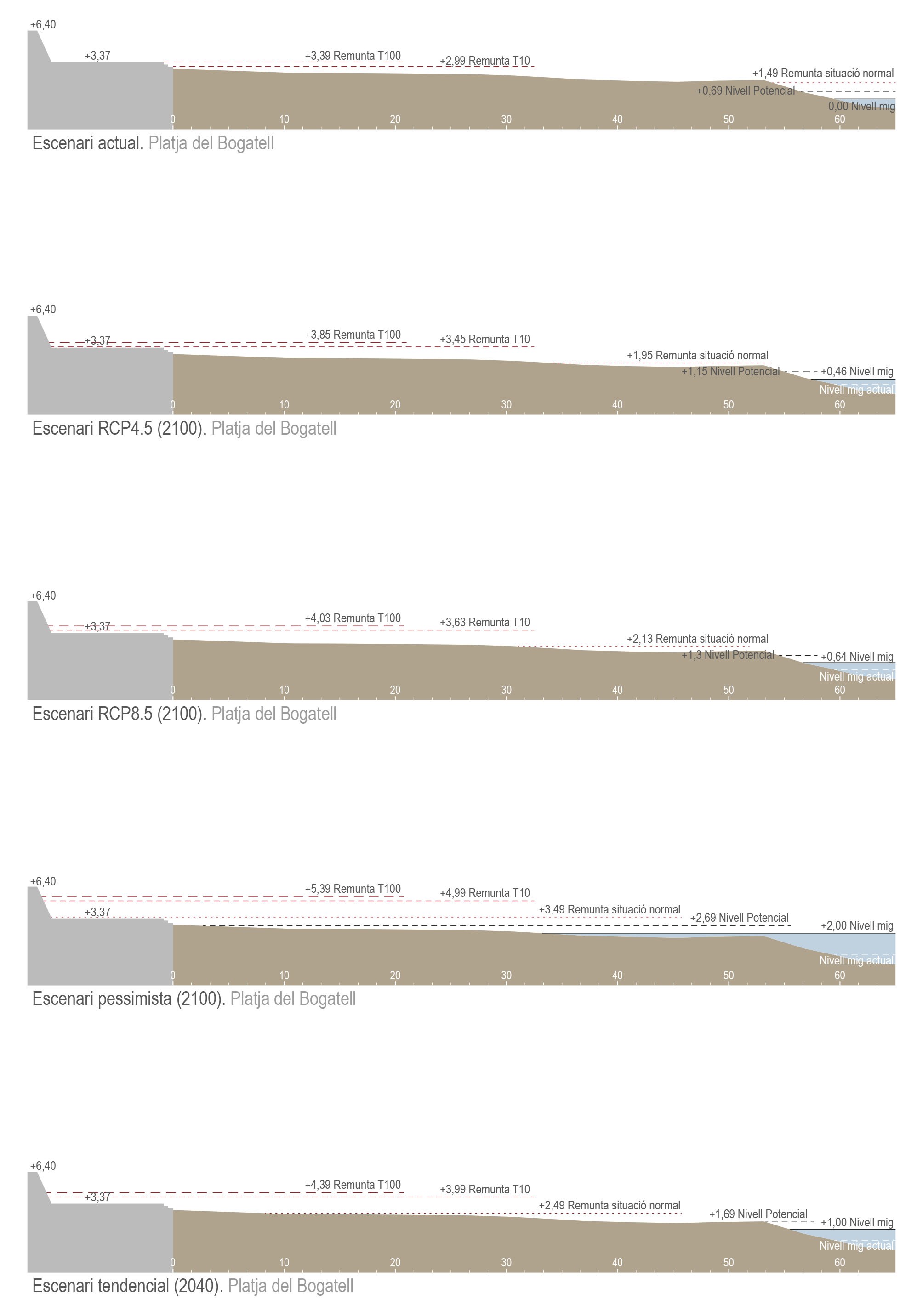 Profiles of the flood level at Bogatell beach for the different scenarios considered. Source: Barcelona Regional
Profiles of the flood level at Bogatell beach for the different scenarios considered. Source: Barcelona Regional 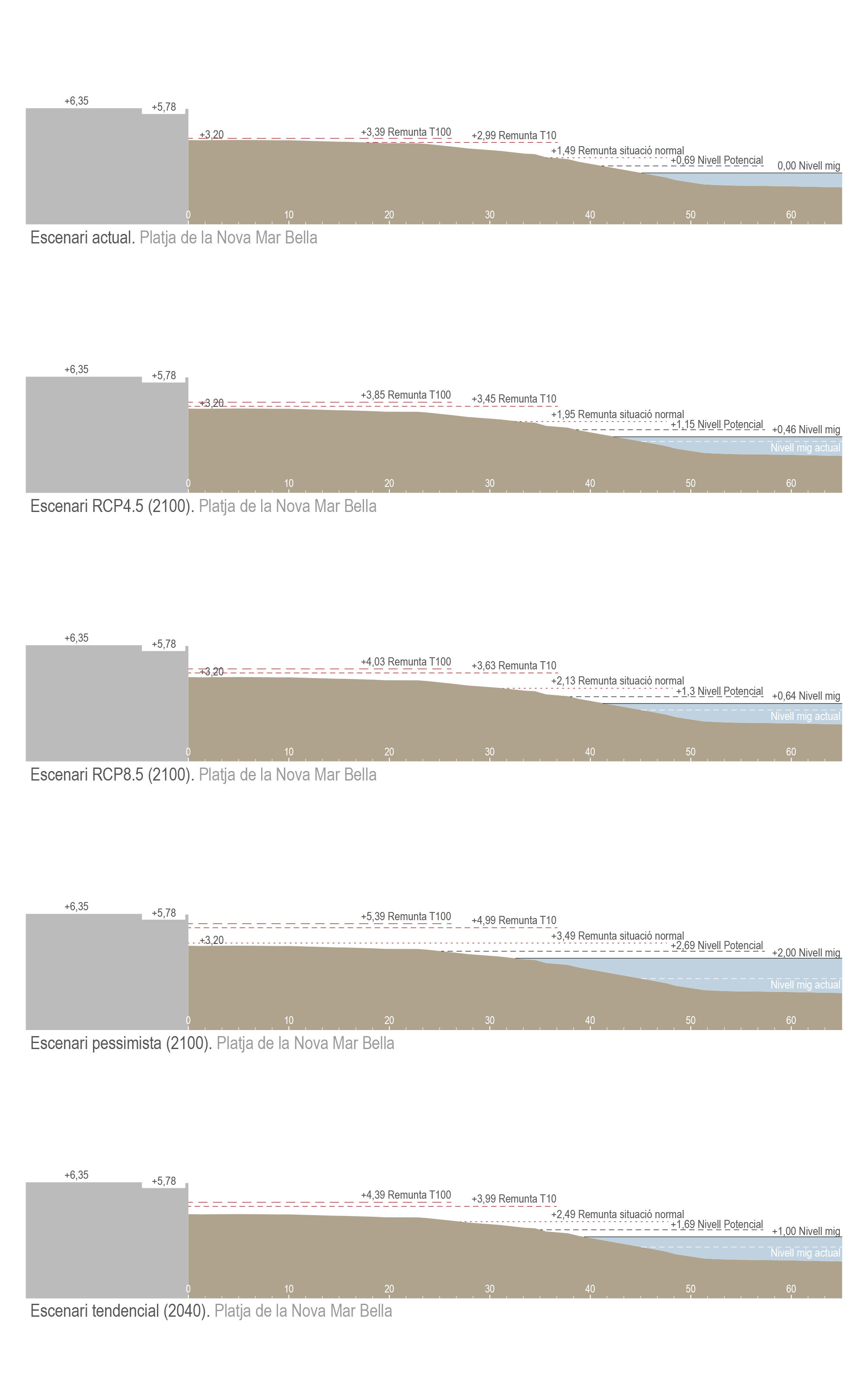 Profiles of the flood elevation at Nova Mar Bella beach for the different scenarios considered. Source: Barcelona Regional
Profiles of the flood elevation at Nova Mar Bella beach for the different scenarios considered. Source: Barcelona Regional 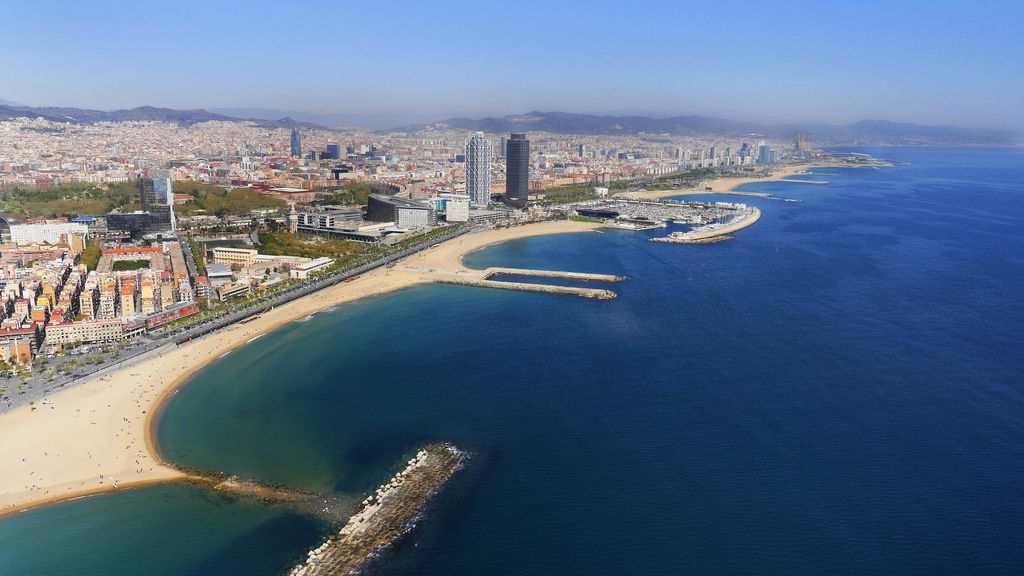 Photograph of the current situation of Barcelona’s beaches. Source: Barcelona City Council image bank (BIMA)
Photograph of the current situation of Barcelona’s beaches. Source: Barcelona City Council image bank (BIMA)